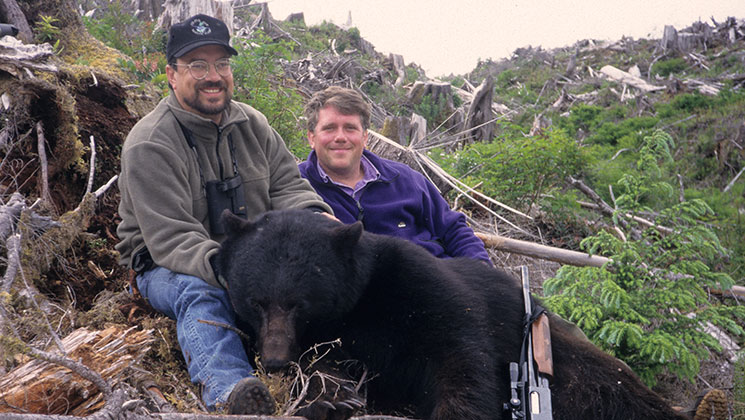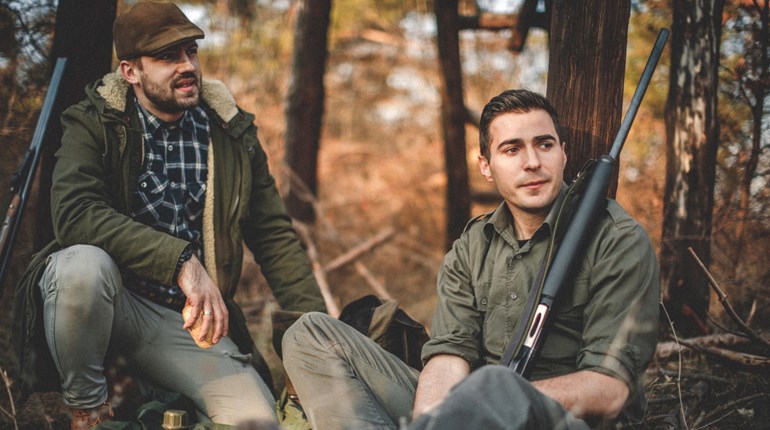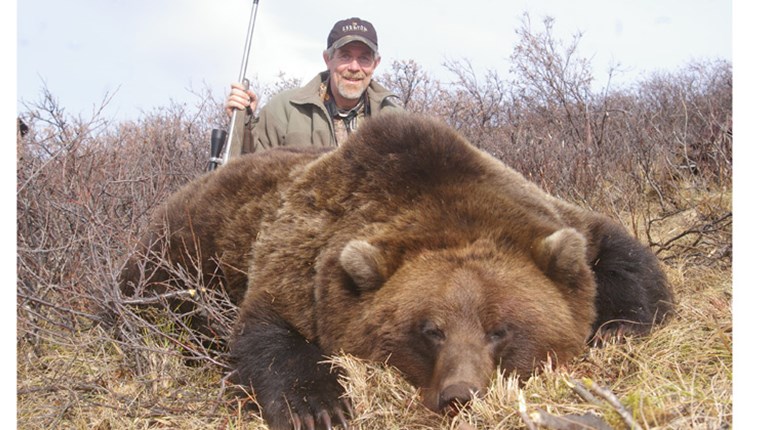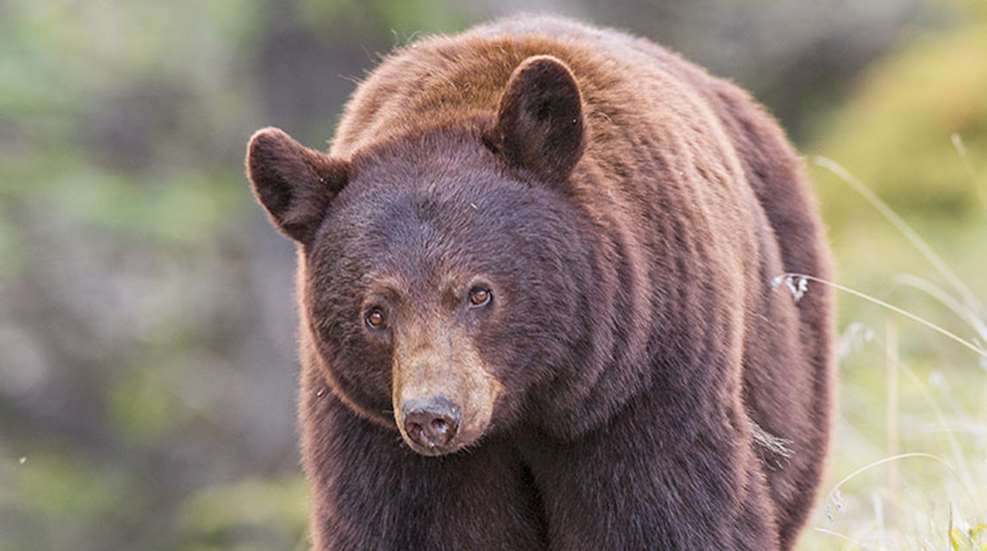
Several years ago, I hunted black bears in Saskatchewan, where baiting’s traditional. After a couple of days my guide asked, “So have you hunted bears before?”
I nodded: “In fact, I’ve hunted them quite a bit around home.”
“What kind of bait do you use?”
“It’s illegal to bait in Montana,” I said, “so we just go out and look for them.”
His eyebrows came together, and then his mouth opened, but no words emerged. Finally he shook his head slightly, and our conversation drifted into more comprehensible subjects such as fishing and country music.
Spot-and-stalking spring bears is indeed regional, partly because not all American states or even Canadian provinces hold spring seasons. Bear numbers have increased enormously in many Eastern states in recent decades, but none allow spring hunting (except for limited hunts on tribal lands in Maine). Several Western states have long spring seasons, and some don’t allow baiting or hunting with hounds so the only way to hunt black bears is by going out and looking.
But even if spring seasons opened in the East, spot-and-stalk often wouldn’t be practical, both because of thick forests and the fact that even where there are “lots” of bears, there aren’t very many. An average of two bears per square mile is considered high, while whitetails often average 15-50 per square mile. Maine reports that only 2 percent of hunters take bears by stalking, and a friend from West Virginia—a state with an estimated 8,000 bears—had hunted all his life and never even seen one before coming to Montana to hunt with me one spring.
The first step in hunting spring bears is having some idea of when they emerge from their dens, because hunting seasons often open before bears wake up. Montana’s a good example: Opening day is April 15, but unless relatively little snow falls during winter and spring’s unusually early, most black bears don’t emerge until May. I’ve met nonresident hunters who don’t believe Montana has any black bears, because they started hunting April 15 and never saw any bear sign, much less a bear, in a week of hunting.
Many residents consider Mother’s Day weekend the real opener, because that’s when they can depend on bears being out and about—which is why my West Virginia friend, Richard, flew in on May 12, after spending the weekend with his mother. The next morning we range-tested his rifle to make sure the scope still pointed in the right direction, then went looking for a bear.
Find Food, Find Bears
Unlike many humans (including Richard), black bears don’t normally eat lots of donuts such as those my Saskatchewan guide dumped in the woods every day. If we can’t lure them with unnatural food, then the surest way to find a bear is to figure out what natural food they’re eating.
Unfortunately, bears are omnivores capable of eating as wide a variety of food as humans. Fortunately, the available wild food varies considerably throughout the year, and a black bear’s needs vary as well. Bears fresh from the den haven’t eaten for several months, so typically gorge on green vegetation, both to kick-start their empty digestive tracts and get some carbs into their semi-starved muscles.
Spring bears emerge when there’s still some snow around their dens, then search for snowless ground. Openings on sunlit south slopes green up first, but as temperatures warm southern exposures dry quickly, except for a strip just below the retreating snow line. Eventually the snow on north slopes melts, and bears wander over to those meadows.
Black bear country is wetter and thicker closer to the Pacific Coast, but becomes drier farther inland, with more natural openings amid thinner forests. However, both types of habitat can occur in the same state, because of the enormous effect of major mountain ranges on precipitation patterns. Coastal ranges wring a lot of moisture from air heading inland from the Pacific, the reason eastern Oregon and Washington are much drier. But considerable precipitation also falls on the Rocky Mountains from northern Idaho down through Colorado, so the Rockies west of the Continental Divide tend to be wetter and the eastern slopes drier.
Bear densities are higher in wetter country, due to more food, but there’s also more timber to hide bears. Most natural openings are recent burns, or avalanche slides on steep slopes, where cascading snow clears trees from mountainsides. Humans also create mountainside “meadows” by clear-cutting timber, and logging roads are essentially long, skinny openings.
In drier country, clear-cuts and avalanche slides can also be good places to glass during early spring, but they lose their green quickly. Bears aren’t nearly as abundant in dry country, so I look for what biologists call micro-habitat: smaller areas around groundwater seeps or shaded north-slope meadows. These scattered particles of deep green attract spring bears year after year.
Bring the Bino
The primary method is glassing—and then more glassing. Like many big-game animals, black bears are most active early and late in the day, though in spring they often show a preference for sunny afternoons. (I would, too, after sleeping under snow for several months.) They sometimes head into thick cover to bed before you can complete a morning stalk, but often come out to feed in the same area that afternoon.
Unlike some other big game, spring bears are easy to glass, especially black black bears, because aside from burned stumps little in nature is absolutely black. Even the brown-phase bears found in many parts of the West are relatively easy to spot in spring, because unlike deer they rarely bed in the open, so are almost always spotted when moving and feeding.
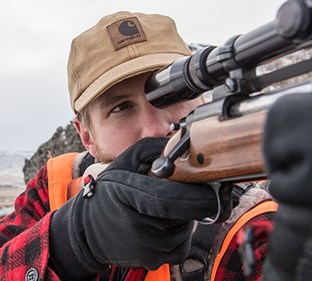 I’ve glassed bears up to 2 miles away, and there wasn’t any confusion about what they might be, no matter their color—except for possibly being a grizzly. Western states and Canadian provinces provide plenty of grizzly-identification information to black bear hunters, but if there’s any doubt, don’t shoot. I grew up in grizzly country and know the differences, but passed up what may have been the biggest black bear I’ve ever seen during Montana’s spring season because it was brown and I couldn’t be sure. (It’s also smart to watch any black bear for a while before shooting, even if very sure of the species, in case it has cubs.)
I’ve glassed bears up to 2 miles away, and there wasn’t any confusion about what they might be, no matter their color—except for possibly being a grizzly. Western states and Canadian provinces provide plenty of grizzly-identification information to black bear hunters, but if there’s any doubt, don’t shoot. I grew up in grizzly country and know the differences, but passed up what may have been the biggest black bear I’ve ever seen during Montana’s spring season because it was brown and I couldn’t be sure. (It’s also smart to watch any black bear for a while before shooting, even if very sure of the species, in case it has cubs.)
Blond black bears obviously really stand out, and few hunters pass up any blond bear, the reason blond bears rarely get really big. Brown-phase bears often live long enough to grow somewhat larger. The biggest really unusual color-phase bear I’ve glassed was probably a 6-footer, with a chocolate body and brick-red legs and head, but a hidden cow elk blew the stalk.
Judging the age of spot-and-stalk bears can be tricky, since they aren’t standing next to 55-gallon drums full of donuts. The most reliable indicator is their ears, which don’t grow as rapidly as the rest of the bear. A young bear’s ears sit as little as an ear-width apart and look relatively large, but as bears mature the skull broadens and the ears move at least two ear-widths apart. In older bears they’re three or even four ear-widths apart, and appear much smaller.
Young bears also have lanky bodies, partly because they’re constantly in motion, sniffing here and trotting there while investigating their new world. Older bears are heavier and more deliberate, oddly enough often making them easier to stalk.
Seek Spring Flings
Bears fresh out of the den have the thickest hair and longest claws, but black bears rut in spring and early summer, sometimes more than a month after they emerge. June is usually prime-time, but many seasons close before then. If you want a really big bear, it definitely helps to hunt somewhere with a longer season, especially closer to the Pacific, partly because bears grow quicker where winters are shorter and food more abundant. I took my biggest spring bear, a heavy 7-footer, while hunting British Columbia’s Vancouver Island from Jim Shockey’s camp in early June, guided by his cousin Guy.
During my first day on Vancouver I saw more black bears than normally encountered during a week in Montana, and on the second morning we found a bigger black bear following a smaller black bear across a huge clear-cut. Guy glassed them carefully, but soon the rear bear’s actions made it plain it was a big boar, and its fur was still in good condition.
With a rifle I could have shot from right there, but I was testing a new shotgun slug load. The stalk took close to an hour, but eventually I sneaked up within 75 yards. At the shot the boar whirled and ran away from the female, perhaps thinking she’d violently rejected him, but collapsed after 15 yards.
Take a Hike
Many hunters hike logging roads in national forests, for several reasons. First, the Forest Service closes many roads in fall until the roads dry out in late spring. While you can find bears near open roads, bigger bears soon learn to avoid vehicles.
Closed roads also green up quickly, and lead to clear-cuts and even avalanche slides, so you’ll often find bear tracks or droppings along the roads. The rule of thumb is to measure the width of the front paw print in inches, then add one for the “square” of a bear’s hide in feet: A 5-inch-wide paw print translates into a 6-foot hide—a mature bear. Another rule of thumb is that droppings thicker than the base of your thumb indicate a good bear—and if green and soft the bear’s not far away.
We found Richard’s bear by hiking almost 4 miles up a closed Forest Service road. We could’ve run into a bear anywhere along the road, but the real destination was an acre of spring seeps at the head of the little creek between timbered ridges. I’d found sign around the seeps more than once, but hadn’t yet seen a bear there.
It was mid-afternoon on a sunny day, and as we neared the green meadow I was looking to the left and Richard to the right. He saw the bear, standing less than 100 yards away, and stopped, but I kept easing forward until he whispered, “There’s a bear.” The bear loped into the timber, black hair shining in the sunlight, but didn’t seem super-spooked, and no cubs followed.
“That was a decent bear,” I whispered. “It might come out again, and there’s plenty of daylight left.” Richard seemed slightly stunned after seeing his first wild bear, but managed a nod. We sat under a tree behind some sparse brush, eyes on the green seep—and because of the possibility of a bear, watching grass grow was actually exciting.
A little less than an hour later the bear appeared 175 yards up the seep, walking slowly toward the middle where the grass grew tallest. Richard already had his .358 Winchester rested on light shooting sticks, and at the shot the bear rolled onto its back and waved four paws in the air for a few seconds—then jumped up and ran behind the nearest trees.
Bears can fall to almost any hit, but also sometimes rise again after a fatal shot. Richard’s placement had been perfect, the 225-grain Nosler Partition centering both lungs, and we found the bear lying a few yards into the timber. Its hide squared slightly under 6 feet, not huge but in the Rocky Mountains a good trophy. The fur was in perfect condition and the claws long and sharp, indicating the bear had only recently emerged from its den.
Richard packed the hide out that evening, draped over his shoulders, and the next morning we pushed a game cart back up the road for the meat, hearing a ruffed grouse drum in the quaking aspens and spotting a small herd of shaggy elk. Unless a spring bear finds a winter-killed elk or Angus, the meat’s normally mild-flavored, and that’s how the steaks from Richard’s bear tasted a day later.
